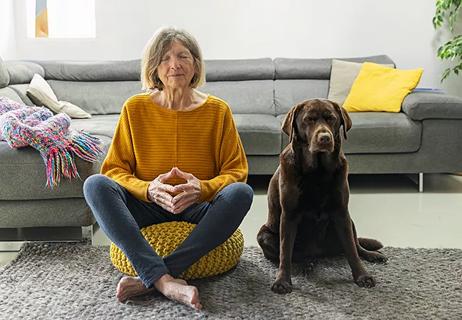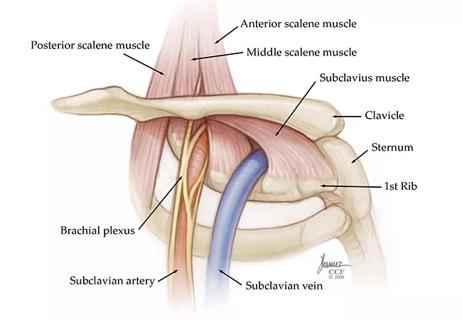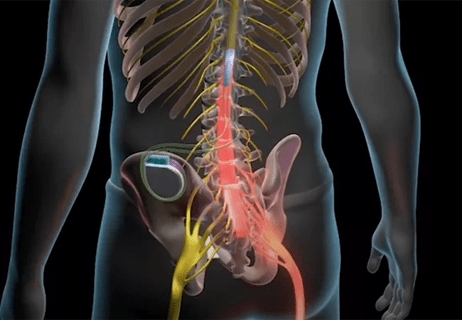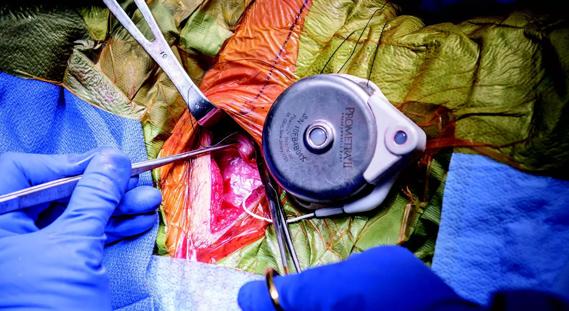Teach patients to treat pain with healthy living

Advertisement
Cleveland Clinic is a non-profit academic medical center. Advertising on our site helps support our mission. We do not endorse non-Cleveland Clinic products or services. Policy
When patients present with a chronic pain condition, we often attribute it to their age, wear and tear, or genetics. We indicate that they couldn’t avoid it. It was out of their control.
But that’s not always true. Many pain conditions aren’t completely out of a patient’s control. Sometimes pain is related to lifestyle choices or diseases that result from lifestyle choices.
Research shows that lifestyle is a contributing factor in 78 to 90 percent of chronic disease. And for those with a chronic disease — which is half of all U.S. adults, according to the CDC — managing pain is more difficult.
Disease can initiate, perpetuate or exacerbate pain. Degenerative disease, autoimmune disease, cancer, infectious disease and trauma are common triggers of chronic pain syndromes. The body’s response to illness or injury — which includes inflammation, immune response or epigenetic changes — can contribute to pain as well.
While we can prescribe NSAIDs or give steroid injections to put out the fire of pain, too often patients reignite the flame with their lifestyle.
Patients can do more to minimize pain on their own by maximizing their wellness. But they need to be taught how.
When a patient is looking for long-term pain relief, I educate them on four lifestyle factors:
Sleep. Most recuperation, rejuvenation and detoxification in the body is done during sleep. Poor sleep is a major contributor to chronic disease. Approximately 50 to 70 million Americans suffer from a chronic disorder of sleep and wakefulness. Disordered sleep hinders daily functioning, is associated with increased risk of injury and adversely affects health (increased risk of hypertension, diabetes, obesity, depression, heart attack and stroke). Americans spend hundreds of billions of dollars a year on doctor visits, hospital services and medications for sleep problems.
Advertisement
It is estimated that 4 percent of U.S. adults use sleep aids. Unfortunately, many still do not achieve good quality sleep. Instead of sleep aids, I recommend techniques for better sleep hygiene, evaluate patients for sleep disorder and refer them for a sleep medicine consult when necessary.
Movement. A typical day for many patients suffering from chronic pain includes hours of couch time. Physical activity hurts, but inactivity can make pain worse. Rather than telling pain patients they need to “exercise,” I encourage them to “move throughout the day.” Setting a timer for every 20 minutes as a reminder to get up and walk around the living room can seem less daunting than starting an exercise regimen. Building consistent movement into their day can aid recovery enough to help them tolerate an exercise program later.
Stress management. Stress exacerbates pain, yet it’s controllable. I encourage patients to optimize their environments, removing toxins, such as interpersonal conflict, noise and clutter. I advise them to develop good social connections, which is important for emotional support. And I help them identify stress relievers that work for them — possibly exercise, meditation, prayer or mindfulness — and refer them to a psychologist or health coach if needed.
Diet. Pain patients are often malnourished. Nutritional deficiency, usually resulting from unhealthy food choices, contributes to pain. (More on this in the next article.) Teaching patients how sugar, processed carbohydrates and damaged fats can increase inflammation and otherwise aggravate pain can help inspire healthier diets.
Advertisement
Educating patients on how to live healthy — and improve or prevent chronic disease — is the first step to combatting chronic pain. Wellness can be a more effective treatment than pain medication, which sometimes causes additional discomfort and unwanted side effects.
Dr. Dews is Eastern Region Vice Chair of Pain Management at Cleveland Clinic and Medical Director of the Pain Management Clinic at Cleveland Clinic Hillcrest Hospital.
Broussard JL, Ehrmann DA, Van Cauter E, Tasali E, Brady MJ. Impaired insulin signaling in human adipocytes after experimental sleep restriction: a randomized, crossover study. Ann Intern Med. 2012 Oct 16;157(8):549-57.
Chong Y, Fryar CD, Gu Q. Prescription sleep aid use among adults: United States, 2005–2010. NCHS data brief, no 127. Hyattsville, MD: National Center for Health Statistics. 2013.
Institute of Medicine (US) Committee on Sleep Medicine and Research; Colten HR, Altevogt BM, editors. Sleep Disorders and Sleep Deprivation: An Unmet Public Health Problem. Washington, DC: National Academies Press (US); 2006.
Willett WC. Balancing life-style and genomics research for disease prevention. Science. 2002 Apr 26;296(5568):695-8.
Advertisement
Advertisement

Researchers seek solutions to siloed care, missed diagnoses and limited access to trauma-informed therapies

Study participants also reported better sleep quality and reduced use of pain medications

Two-hour training helps patients expand skills that return a sense of control

Program enhances cooperation between traditional and non-pharmacologic care

National Institutes of Health grant supports Cleveland Clinic study of first mechanism-guided therapy for CRPS

Pain specialists can play a role in identifying surgical candidates

Individual needs should be matched to technological features

New technologies and tools offer hope for fuller understanding